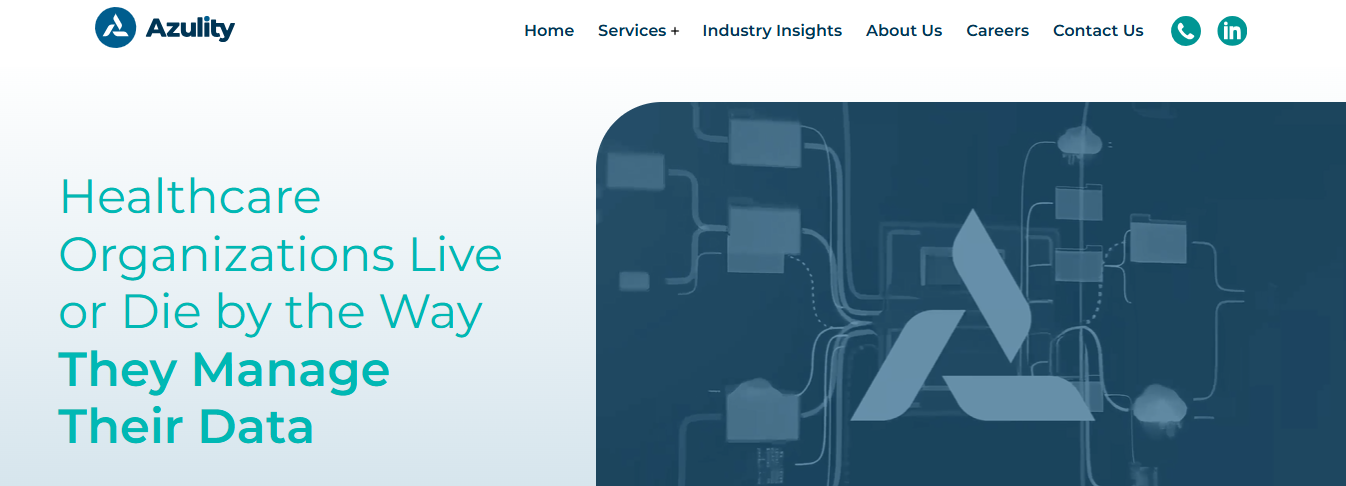When healthcare organizations hire new providers, they want to ensure their practitioners are qualified to deliver safe, effective care. This process begins with collecting and evaluating the practitioner’s credentialing documentation to verify their training and experience.
Next, the organization will use the information collected to conduct a thorough background check on the incoming provider. Once completed, the organization will grant the provider privileges to practice immediately or establish a probationary period to monitor their performance.
In either case, healthcare credentialing helps organizations reduce risk and improve patient safety. However, the process must be well-organized and complete to achieve these specific goals. A well-defined healthcare credentialing workflow helps organizations structure the process so that no steps are overlooked, enabling them to meet their objectives.
Understanding Healthcare Credentialing Workflow


Information Collection in the Credentialing Workflow: Gathering Provider Data
The credentialing process starts when a healthcare provider submits extensive information about his or her qualifications. This data typically includes the provider’s education, training, residency, licenses, specialty certifications, and comprehensive career history. In addition to collecting this basic information, credentialing organizations often use checklists to ensure no pertinent information is overlooked during the initial data collection phase.
Primary Source Verification: Confirming Provider Qualifications
Also known as PSV, primary source verification is contacting the sources of a provider’s credentials to verify their legitimacy and accuracy. Obtaining accurate provider information is crucial to the credentialing process as it ensures that the organization has verified the data submitted by the applicant. This step helps to confirm that the information is correct and up-to-date.
Background Checks: Investigating Provider History
Conducting thorough background checks is critical to the healthcare credentialing workflow. This involves consulting databases such as the National Practitioner Data Bank (NPDB), the Federation of State Medical Boards (FSMB), and the American Medical Association (AMA) Physician Masterfile to uncover any past sanctions or issues related to the provider.
Review by Key Stakeholders: Organizing and Overseeing the Process
Once verification is complete, the collected information is reviewed by a medical staff committee or governing body. In more extensive facilities, this committee typically includes department heads, while in smaller organizations, the process may be overseen by human resources or a practice manager.
Privileging and Payor Enrollment: The Final Steps of Credentialing
Privileging
This step ensures that the provider has the appropriate training and experience to perform specific procedures at the facility.
Payor Enrollment
The provider is enrolled in insurance plans, networks, Medicare, and Medicaid, enabling the provider and the facility to receive payment for services rendered.
Ongoing Monitoring and Recredentialing: Keeping Provider Files Up to Date
After initial credentialing, continuous monitoring and periodic recredentialing are essential to ensure that providers maintain their qualifications and adhere to current standards.
Importance of Credentialing in Healthcare


Credentialing Builds Confidence: An Essential Healthcare Credentialing Workflow Benefit
No one wants to enter a hospital or a doctor’s office only to find out their care team is unqualified. Credentialing helps prevent these situations by assuring patients that their healthcare providers have the proper training and experience to provide the care they need.
When outside organizations have credentialed medical facilities and individual practitioners, it signals to patients that they meet industry standards and are qualified to perform the tasks required to treat their conditions.
Credentialing Helps Reduce Medical Errors
Every year, medical errors contribute to the deaths of over 98,000 Americans. This staggering figure is enough to frighten anyone. It’s no wonder healthcare executives push for higher standards for exposure and expertise regarding disciplinary actions against medical professionals. Credentialing helps reduce medical errors by ensuring that healthcare facilities and independent practitioners have the proper training and qualifications to provide safe patient care.
Credentialing Protects Sensitive Data
Healthcare credentialing involves sharing confidential data, some of which could be damaging in the wrong hands. So, data security is crucial. Putting providers or contractors at risk of a security breach is expensive and damages their reputation.
Credentialing Can Safeguard Against Lawsuits
A precise and complete record of each practitioner’s credentials can be helpful in court. For example, if a healthcare professional in your facility is sued for negligence, you could save yourself a lawsuit. In short, you can avoid a lawsuit by validating all their credentials as needed.
Credentialing Prevents Revenue Loss
Best Insurance Credentialing Companies can help medical clinics avoid losing money due to delayed or denied reimbursements. Failing to obtain proper credentialing may result in insurance carriers refusing to reimburse medical providers for their treatments.
Azulity specializes in healthcare master data management and provider credentialing services, bringing proven expertise in implementing healthcare data solutions and credentialing across the US. Our comprehensive platform ensures consistent patient, provider, location, and claims data synchronization across all systems and departments.
Key features include healthcare MDM, provider MDM, reference data management, credentialing, and provider enrollment. We serve healthcare technology leaders – from CIOs and CDOs to VPs of data platforms and credentialing – helping them eliminate the costly problems of fragmented data systems. Book a call to learn more about our healthcare master data management services today!
Related Reading
Types of Credentialing in Healthcare


1. Physician Credentialing: Verifying Qualifications for a Safe Healthcare Environment
Physician credentialing confirms the qualifications and history of a healthcare provider seeking a new position or contract. This process is standard for doctors joining a new facility, like a hospital or clinic. Physician credentialing can be done by the facility’s administration or recruitment teams, or a professional credentialing organization can also complete the process.
2. Credentialing Maintenance: Keeping Your Provider’s Qualifications Up to Date
Re-credentialing or credentialing maintenance is the ongoing process of verifying that the qualifications of an employed healthcare provider are current and relevant. This service also checks for criminal histories and past lawsuits to ensure patients’ safety in the provider’s care. Credentialing service companies can assist healthcare facilities with credential maintenance.
3. Provider Enrollment: Getting Healthcare Providers Paid
Enrolling a healthcare provider in a health insurance plan or network is a credentialing service called provider enrollment. This service is necessary for individual providers and larger institutions. Along with verifying the healthcare provider’s qualifications and background, credentialing companies confirm that the provider meets the health plan or network’s requirements. Successful enrollment allows the provider to receive payments and reimbursements from health insurance companies.
14 Best Practices for Efficient Healthcare Credentialing Workflow


1. Azulity: The Healthcare Credentialing Specialists


Azulity focuses on healthcare master data management and provider credentialing services. The company has extensive experience implementing healthcare data solutions and credentialing across the U.S. Its platform helps healthcare organizations eliminate the costly problems of fragmented data systems by ensuring consistent synchronization of patient, provider, location, and claims data across all systems and departments.
Key features include healthcare master data management, provider master data management, reference data management, credentialing, and provider enrollment. Azulity serves healthcare technology leaders — from CIOs and CDOs to VPs of data platforms and credentialing. Book a call to learn more about our healthcare master data management services today!
2. Assign Someone to Oversee Credentialing Tasks
Whether you outsource or handle credentialing chores in-house, appointing a credentialing coordinator to keep track of deadlines and expirations is a wise business decision. They can send out timely reminders to guarantee that no one’s credentialing expires and that reimbursements are not refused.
3. Define Clear, Achievable Milestones
The first step in leveraging milestones within your credentialing workflow is to define them clearly and ensure they are achievable. Milestones should represent significant points in the credentialing process.
In the case of an onboarding workflow example, sample milestones could include receiving the new provider credentialing request, assigning the request to a specific specialist, sending a welcome email to the provider, starting the credentialing process, and initiating primary source verification. Establishing these checkpoints provides a roadmap for specialists and management, illustrating progress and pinpointing delays.
4. Give Plenty of Time to Complete the Credentialing Process
While credentialing “should” take 90 days, practical procedures allow 150 days. Credentialing with payers must occur on their timetable, and each has its own. Assume that credentialing will take 150 days, and you’ll be pleasantly pleased if it takes less.
5. Utilize Milestones for Process Transparency
Milestones offer a unique opportunity to enhance transparency across the credentialing process. By marking critical steps in the workflow, team members can quickly ascertain the status of any application or provider at a glance. This visibility not only aids in internal communication but also fosters a culture of accountability and collaboration. For instance, tracking milestones from when a credentialing request is received to when it’s assigned and actioned brings clarity and allows for more accurate forecasting of turnaround times.
6. Follow the CAQH Credentialing Program to Stay Up to Date
Payers increasingly adopt the Coalition for Affordable Quality Healthcare (CAQH) standard credentialing program. Interfacing with this software is valuable because physicians who routinely update and attest their information with the CAQH enjoy more efficient credentialing and re-credentialing experiences.
7. Analyze Turnaround Times for Continuous Improvement
Milestones are critical in identifying and analyzing turnaround times, which is invaluable for identifying bottlenecks and inefficiencies in credentialing and enrollment. By noting when milestones are achieved, managers can calculate average completion times, assess performance against benchmarks, and set realistic expectations for internal stakeholders and providers. Such insights are crucial for continuous improvement efforts, ensuring that the credentialing workflow evolves to meet the growing needs of the healthcare organization.
8. Link the New Provider Start Date to the Submission of Credentialing Forms
Many practices require credentialing papers as soon as an offer of employment is made. Others associate a new physician’s start date with paperwork submission. For example, you may set a new physician’s start date no later than 120 days after receiving his or her credentialing information.
9. Maintain Up-to-Date Contact Information for All Physicians
Ensure your office manager or credentialing coordinator has accurate and up-to-date physician contact information. Dealing with credentialing or re-credentialing issues can take longer without direct communication. The credentialing procedure also entails filing several forms, and good communication is crucial throughout.
10. Establish a Long-Term Credentialing Process
Creating a credentialing workflow can be difficult, but it will benefit you in the long run. Even if you outsource credentialing, your workflow should include all the needed forms and papers. Re-credentialing is a constant in a multi-physician practice, and a workflow to support it benefits the practice immensely.
11. Employ Milestones for Custom Reporting
Custom reporting, powered by milestone data, can provide leadership with the insights needed to make informed decisions. Milestones allow credentialing teams to report on key steps, analyze trends, and do things like compare the time it takes to onboard different types of providers, how turnaround times have trended over a period (e.g. Are they improving or not improving?), or how average time from enrollment application submission to approval varies from payer to payer.
This tailored reporting capability means leaders do not rely on generic metrics but can have data specific to their operations and strategic goals. It allows teams to advocate for resources, highlight achievements, and identify areas for further development.
12. Ensure That All Physicians Understand What Is Expected of Them
Each provider should be aware of his or her responsibilities regarding credentialing or re-credentialing. As soon as the job offer is made, make it evident to the new hire that you require specific information, such as work and education history, certification and license information, and malpractice liability certification, among other things.
13. Leverage Technology for Milestone Tracking
Technology is pivotal in efficiently tracking and managing milestones within credentialing workflows. Implementing a robust credentialing platform that allows for the customization and tracking of milestones can significantly reduce administrative burdens and eliminate manual tracking methods for better, real-time visibility.
14. Perform Your Background Check Early On in the Process
Before making an employment offer, many practices prefer to do their background check on incoming physicians, including verifying training and employment history. It may appear overkill, but it can save you from employing a doctor and only having issues later on.
15. Understand Your State’s Regulations Completely
Your state may have its provider credentialing regulations and reciprocity agreements with payers and other state credentialing bodies. If a physician is credentialed with a payer in another state before transferring to your practice, the payer may simplify credentialing for the new employment.
Related Reading
- Behavioral Health Credentialing Checklist
- Dentist Credentialing Checklist
- How to Do Credentialing in Healthcare
- Nurse Practitioner Credentialing Checklist
- Physician Credentialing Services Cost
Book a Call to Learn More About Our Provider Credentialing Services
Healthcare credentialing workflow is a critical process in modern healthcare. It helps healthcare organizations maintain compliance, reduce risk, and improve patient safety. In particular, credentialing establishes a transparent and data-driven way to verify the qualifications of medical staff and their ability to deliver safe and effective care. An efficient credentialing process can significantly improve healthcare operations by reducing the time it takes to verify the qualifications of providers and staff.
This directly impacts revenue by reducing the time that newly hired or transferring providers must wait before they can see patients and helping to prevent costly disruptions to care when existing providers experience coverage gaps due to expiring credentials. Moreover, an organized and well-oiled credentialing workflow improves stakeholder satisfaction by creating a smoother experience for practitioners and regulatory agencies.
Key Components of Healthcare Credentialing Workflow
Healthcare credentialing workflows can vary significantly from organization to organization, but most will include the following key components:
1. Application
The process begins when a practitioner applies for hospital privileges, network participation, or some other credentialing that requires verification of their qualifications. This application may be completed on paper or electronically through an online portal.
2. Verification
Next, the organization will verify the information in the applicant’s file. This typically involves a combination of primary source verification, secondary source verification, and background checks.
3. Review
Once the information has been sufficiently verified, it will be presented to a committee or governing body for review. The group will determine whether the applicant meets the organization’s standards for quality and safety.
4. Approval or denial
Finally, the applicant will be notified of the outcome of the credentialing process. If approved, the practitioner will be granted privileges or network participation. If denied, the applicant may be allowed to appeal the decision.
Why You Should Care About Healthcare Credentialing Workflow
Healthcare credentialing workflows can help organizations reduce costs and improve patient safety and care quality. First, credentialing helps to ensure that healthcare organizations maintain compliance with industry standards and regulations. This helps mitigate the risk of costly fines and penalties resulting from noncompliance.
Efficient credentialing workflows also improve patient safety by reducing the time it takes to verify the qualifications of medical staff. This helps to ensure that experienced practitioners can quickly resume care when an existing provider cannot continue due to expiring credentials. Furthermore, credentialing helps ensure that only qualified practitioners can provide patient care.
This reduces the risk of adverse patient outcomes and helps to improve overall care quality. Finally, an efficient healthcare credentialing workflow can enhance the experience for both practitioners and regulatory agencies.
Related Reading
